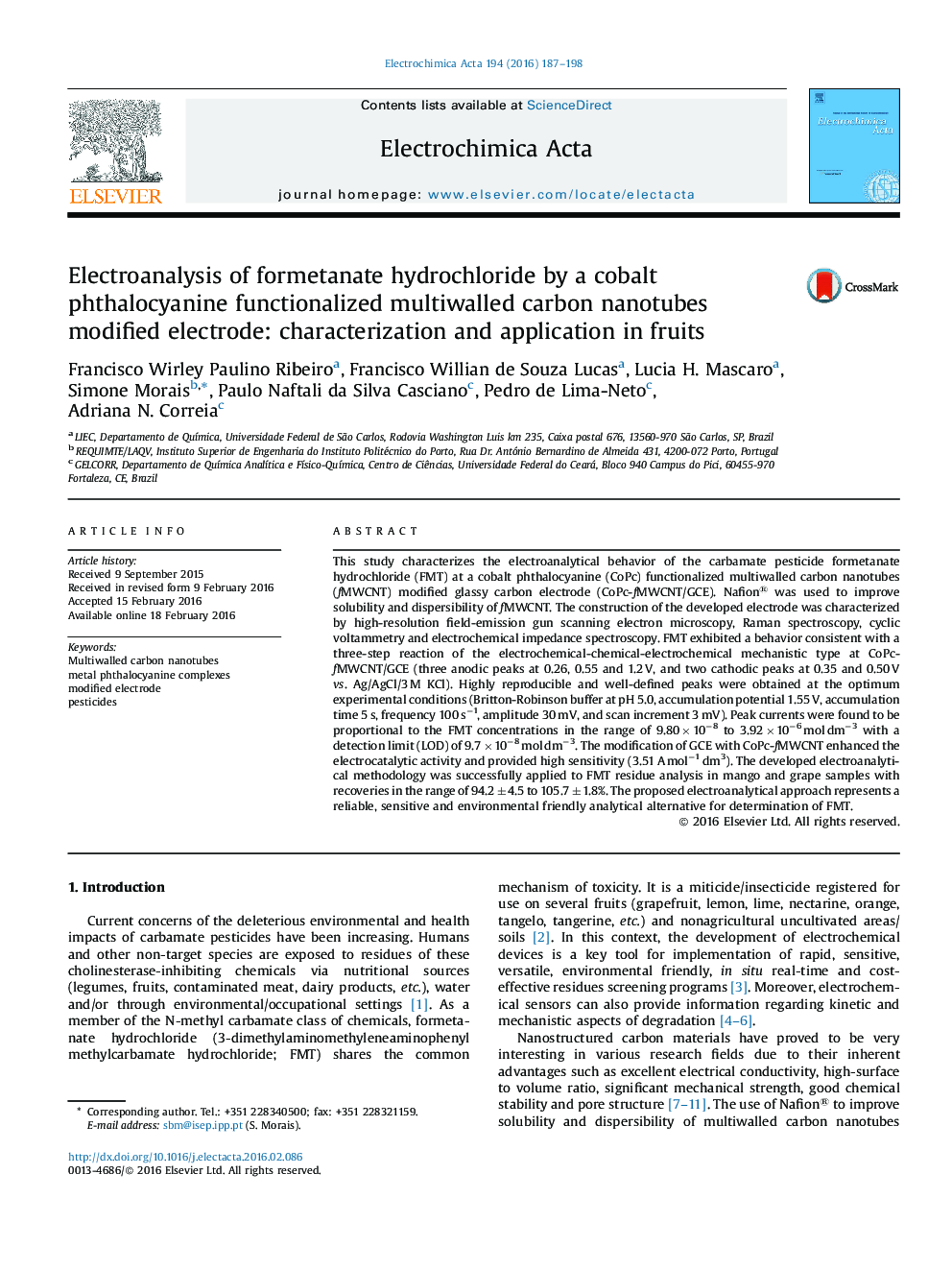| Article ID | Journal | Published Year | Pages | File Type |
|---|---|---|---|---|
| 183113 | Electrochimica Acta | 2016 | 12 Pages |
•A Co-phthalocyanine functionalized MWCNT modified carbon electrode was developed.•Formetanate (FMT) electroanalytical behavior is consistent with an ECE mechanism.•CoPc-fMWCNT/GCE exhibited good analytical performance to quantify FMT.•CoPc-fMWCNT/GCE was successfully applied to fruits (recoveries ≥ 94.2%).
This study characterizes the electroanalytical behavior of the carbamate pesticide formetanate hydrochloride (FMT) at a cobalt phthalocyanine (CoPc) functionalized multiwalled carbon nanotubes (fMWCNT) modified glassy carbon electrode (CoPc-fMWCNT/GCE). Nafion® was used to improve solubility and dispersibility of fMWCNT. The construction of the developed electrode was characterized by high-resolution field-emission gun scanning electron microscopy, Raman spectroscopy, cyclic voltammetry and electrochemical impedance spectroscopy. FMT exhibited a behavior consistent with a three-step reaction of the electrochemical-chemical-electrochemical mechanistic type at CoPc-fMWCNT/GCE (three anodic peaks at 0.26, 0.55 and 1.2 V, and two cathodic peaks at 0.35 and 0.50 V vs. Ag/AgCl/3 M KCl). Highly reproducible and well-defined peaks were obtained at the optimum experimental conditions (Britton-Robinson buffer at pH 5.0, accumulation potential 1.55 V, accumulation time 5 s, frequency 100 s−1, amplitude 30 mV, and scan increment 3 mV). Peak currents were found to be proportional to the FMT concentrations in the range of 9.80 × 10−8 to 3.92 × 10−6 mol dm−3 with a detection limit (LOD) of 9.7 × 10−8 mol dm−3. The modification of GCE with CoPc-fMWCNT enhanced the electrocatalytic activity and provided high sensitivity (3.51 A mol−1 dm3). The developed electroanalytical methodology was successfully applied to FMT residue analysis in mango and grape samples with recoveries in the range of 94.2 ± 4.5 to 105.7 ± 1.8%. The proposed electroanalytical approach represents a reliable, sensitive and environmental friendly analytical alternative for determination of FMT.
Graphical abstractFigure optionsDownload full-size imageDownload as PowerPoint slide
